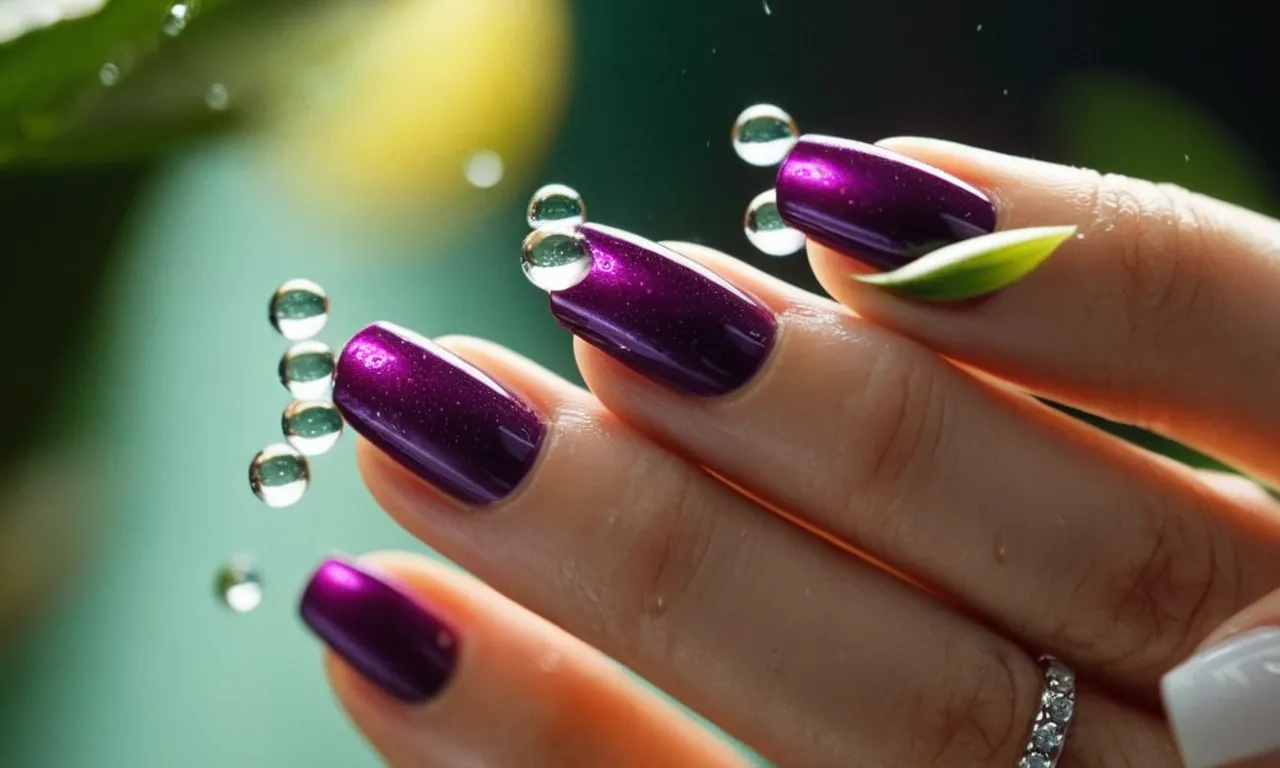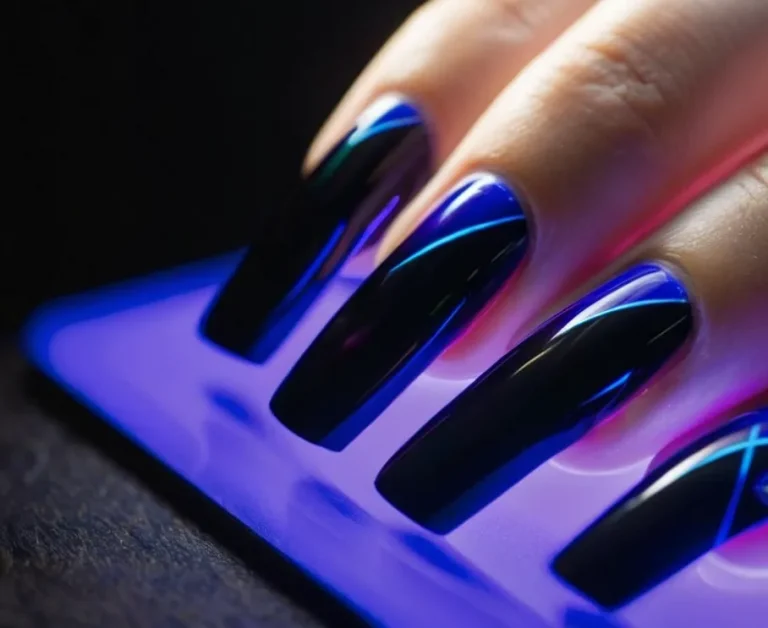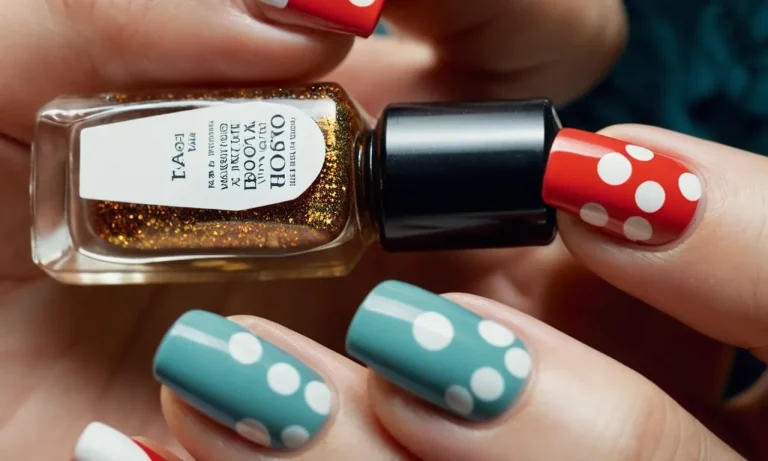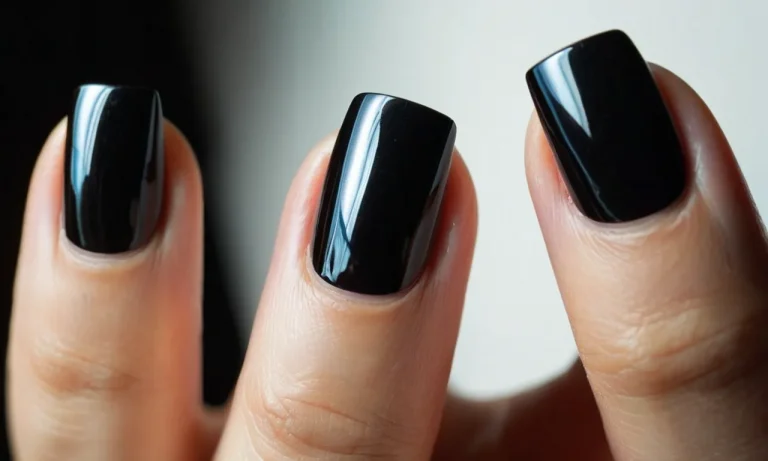Can Press On Nails Get Wet? A Detailed Guide
Press on nails have become an increasingly popular nail enhancement option for their affordability, ease of application, and temporary wear. Their adhesive nature, however, leaves many wondering if press on nails can withstand water exposure or if getting them wet causes damage.
If you’re short on time, here’s a quick answer to your question: Press on nails can get wet, but moisture can compromise the adhesive and cause the nails to lift or fall off prematurely. Limiting water exposure and using proper application techniques can help press ons withstand some wetness.
How Moisture Impacts Press on Nails
Moisture and water exposure can significantly impact the wearability and longevity of press on nails. Here’s an in-depth look at the main ways moisture causes issues for these nail enhancements.
Weakens the Adhesive
Press on nails rely on a strong adhesive to bond securely to your natural nails. However, moisture can break down the ingredients in the glue, preventing it from curing properly or reducing its sticking power over time.
This makes the artificial nails more likely to lift, peel off prematurely, or fall off unexpectedly.
Specifically, water causes the cyanoacrylate monomers in the nail glue to polymerize too rapidly. This interferes with the normal curing process and prevents the adhesive from reaching its maximum strength and longevity. Weakened bonds are more easily undermined by regular wear and tear.
Causes Lifting, Peeling, and Falling Off
As mentioned, moisture-damaged glue often results in press on nails lifting, peeling, or falling off ahead of schedule. This problem tends to start at the tips or sides of the nails. You may notice bubbling, a white hazy appearance under the tip edge, or that the artificial nail easily catches on things.
This moisture damage can occur after just a single longer water exposure, like taking a bath or going swimming. Or, it can happen gradually after repeated light splashes and wet tasks over time. Either way, once lifting begins the problem quickly spreads across the rest of the nail.
Leads to Premature Damage and Shortened Wear Time
In addition to bonding issues, moisture interacts with press on nails to cause other types of premature damage:
- Makes nail tips brittle and prone to cracking and chipping
- Can trigger fungal infections which damage the natural and press on nail
- Leads to clouding, fogginess, and reduced transparency of gel polish or overlays
- Causes greenish discoloration in lighter gel polish shades
This moisture-related damage means your manicure doesn’t last nearly as long before needing repairs. Your press on nails wind up in the trash much sooner than expected.
| With moisture exposure | With moisture prevention |
| 1-2 weeks max wear | 3-4 weeks typical wear |
As you can see, taking steps to keep your press on nails moisture-free pays off with a drastically increased usable wear time.
Check out the helpful video tutorials on YouTube for pro nail tech tips on getting the most longevity from your press on nail sets.
Tips for Making Press on Nails Water-Resistant
Use nail glue for added adherence
Using a small amount of nail glue when applying press on nails can help secure them even more firmly to your natural nails (Source: https://www.youtube.com/watch?v=yWsthiO4VJw). Choose a nail glue made specifically for press on nails, as it will flex with your nails rather than becoming stiff over time.
Apply just a small dot of glue near the cuticle and press firmly when putting on each nail. This extra adherence can help prevent lifting around the edges when exposed to water.
Avoid soaking nails in water
While properly applied press on nails can withstand some water exposure, soaking them for extended periods can lead to problems. As nail educator Holly Falcone explains, “Press on nails are meant to withstand regular hand washing and accidental water exposure.
However, keeping them submerged under water for a long time can break down the nail glue” (Source: https://www.byrdie.com/press-on-nails-in-water). So when wearing press on nails, it’s best to avoid lengthy dish washing sessions, swimming, or long baths.
If they do happen to get soaked, dry your hands thoroughly and check that all nails are still firmly attached.
Dry hands thoroughly before application
Having perfectly dry natural nails before applying press ons allows for maximum polish adhesion. As makeup artist Sydney Alexis Nguyen says, “You always want to thoroughly dry your own nails before applying any press on nail, because any moisture left behind might prevent the adhesive from bonding properly” (Source: https://hellogiggles.com/beauty/what-happens-when-you-get-press-on-nails-wet/).
Gently file off any oil or lotion residue, then wipe nails with an alcohol pad or acetone-soaked cotton ball. Let your nails air dry for 5-10 minutes before attaching the press ons so no lingering dampness weakens the bond.
Apply a layer of clear coat or sealant
Adding an extra layer of clear polish or nail sealant as a topcoat for your press on nails can help “seal in” the design and prevent water damage. This protective coating creates a moisture barrier that stops water from seeping underneath and deteriorating the glue over time.
Reapply this topcoat every 2-3 days to maintain its protective effects. As manicurist Tom Bachik says, “A good topcoat seals in your design, adds extra shine, and acts like a raincoat against moisture” (Source: https://www.popsugar.com/beauty/photo-gallery/44932190/image/44932209/Apply-topcoat).
This makes regular clear coat touch-ups essential for long-lasting press on nails.
Limits on Water Exposure
Quick hand washing is okay
Washing your hands quickly with press on nails is usually fine. The adhesive is strong enough to withstand a quick rinse of water and soap when washing your hands. Just try to avoid soaking the nails in water during hand washing.
As long as your press ons are applied properly, they should stay put with quick hand washing.
Avoid submerging nails in water
While press on nails can handle quick hand washing, you’ll want to avoid submerging them in water for an extended period of time. The water can seep underneath the nails and weaken the adhesive. Prolonged water exposure can cause the press ons to start lifting at the edges or even pop off entirely.
Don’t wear for dishes, swimming, etc
For activities where your nails will be in constant contact with water, it’s best to avoid wearing press on nails. Washing dishes, swimming, bathing pets, and other wet tasks can compromise the bond of the adhesive.
The press ons are likely to pop off or lift fairly quickly with that much water exposure. Save your press on nails for dry activities instead.
Take nails off before showering or bathing
You’ll want to remove your press on nails before taking a shower, bath, or visiting a hot tub or sauna. The steamy environment and direct water contact will weaken the adhesive. Most press on nails won’t make it through a full shower or bath without starting to lift or fall off.
Play it safe by gently removing the press ons first and keeping them dry.
What to Do if Press ons Get Wet
Gently dry with a towel
If your press on nails get wet, one of the best things you can do is gently pat them dry with a soft towel. Don’t rub vigorously, as this can cause the nails to lift or peel off. Carefully dab at the nails to soak up any moisture without disrupting the adhesive.
Use a hair dryer on a cool setting
After patting your nails dry, you can also use a hair dryer on the cool setting to help evaporate any remaining moisture. Hold the dryer several inches from the nails and wave it back and forth gently. The cool setting prevents heat damage while still drying effectively.
Reapply adhesive tabs as needed
If moisture has caused the nail tabs or glue strips to detach, simply press them back into place firmly. You may also need to apply additional small dots of nail glue if the tackiness seems reduced. Let the glue set and bond for about 60 seconds before using your hands.
Spot glue nails that lift
If the water exposure caused any edges or corners to lift, use a tiny amount of nail glue to re-adhere them. Apply just enough to tack it down without getting glue all over your real nails. Hold for 30-60 seconds to let it set.
Replace nails if damage is severe
Unfortunately, if soaking your press on nails resulted in several coming unglued or peeling up, they may be too far gone. If more than 2-3 nails lifted significantly or the adhesive won’t re-stick no matter what, it’s best to gently remove and replace them.
Let your natural nails breathe before applying a fresh, dry set.
Long-Term Water Resistance Options
Get professionally applied press ons
Getting your press on nails applied by a professional manicurist is one great way to ensure they will be able to withstand more moisture over time. Professionals use high-quality glues and sealants designed specifically for press on nails that provide maximum adhesion and water resistance.
Many salon-quality glues claim to keep press ons secured for up to 2 weeks of wear. Opting for professional application rather than doing press ons yourself at home is the best way to get more long-term wear, even with exposure to water.
Use nail glue for entire application
If you prefer to apply press on nails yourself at home, using a nail glue to fully secure the entire nail (not just the edges) will help with moisture protection. Choose a glue made specifically for artificial nails rather than traditional superglue, as formulas designed for press on nails and extensions provide more flexibility and resistance to water, detergents, oils, etc.
Apply a smooth, even layer of glue to the entire underside of each nail and hold firmly in place for 60-90 seconds before releasing to maximize adhesion. Reapply glue every few days, especially if you notice lifting or gaps appearing.
Apply a quality top coat or sealant
Protecting your press on manicure with a top coat or sealant is key for water resistance. Traditional clear nail polish can work, but specialized top coats made for artificial nails prove most effective.
Sealants containing acrylic, UV gel, or polymers create a protective barrier, preventing water from seeping underneath the enhancements and causing lifting or damage. Apply the top coat over the entire nail and let dry thoroughly. It’s best to reapply every 2-3 days to maintain the protective layer.
Avoid excessive moisture exposure
While preparations like professional application, glue, and sealants can improve water resistance, press on nails still have limitations for regular, excessive moisture exposure. Even with protective measures, activities like:
- Dishwashing
- Swimming
- Hot tubs
- Long showers
Can still compromise enhancement wear and adhesion. Whenever possible, wear waterproof gloves for wet tasks, limit water exposure time, and remove press ons before swimming or bathing. Be extra diligent about reapplying glue and top coat after they encounter moisture to help reinforce and restore water resistance.
Conclusion
While press on nails are not fully waterproof, there are steps you can take to make them more water-resistant. Limiting hand submersion, properly applying nails, and adding a protective top coat can allow press ons to withstand minor wetness.
With the right precautions, you can feel confident rocking press on nails without worrying about damage from accidental water exposure.







